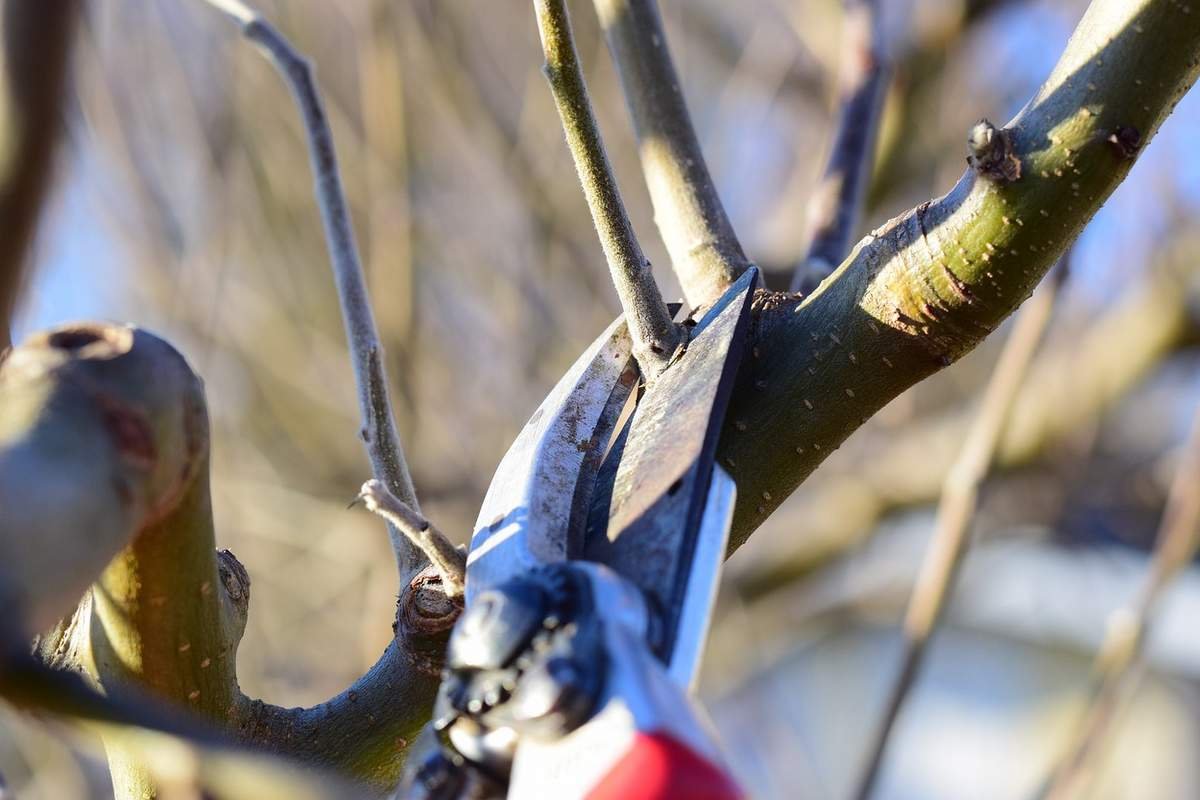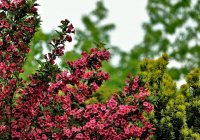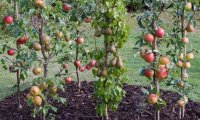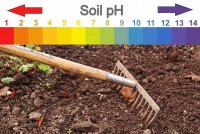
20 Beautiful Perennial Plants for Your Garden

Perennials have an irreplaceable place in our gardens. Here are some of the most beautiful—consider them for yours!
Deciding what to plant in your garden? If you are looking for plants that will last for several years or even decades, bringing you joy year after year, then perennials are the right choice.
What are perennials?
Perennials are plants that live more than two years, renewing its growth and reproduction year after year. Perennials live longer due to a more developed root system, which gives the plants better access to nutrients and gets them through the winter or periods of drought. Annuals, unlike perennials, survive for only one growing season, during which they grow, set seed and die. Some perennials survive for decades and in some cases for over a hundred years (e.g. peonies). In general, annuals require more care, not to mention having to remove them from the garden at the end of the season and start all over again.
Perennials are generally low maintenance, can withstand harsher climates more easily and are available in a wide range of sizes, shapes, colors and features. Some perennials can also grow in height each year, adding a vertical dimension to gardens.
Almost every garden needs perennials, but the choice isn’t easy with today's vast offerings. That's why we've compiled a list of some of the top perennials suitable for gardens. Our list of perennials contains the best of many different types of plants. You’ll find our recommendations for the most beautiful perennials for sun, perennials for shade, maintenance-free perennials as well as rockery plants. There’s plenty here to choose from, whatever your garden type.
1. Lavender Lavandula
 Plant type: sun-loving, fragrant perennial
Plant type: sun-loving, fragrant perennial
Growing conditions: sunny location, with well-drained soil
Water: It can withstand longer periods of drought. Water from rainfall is mostly sufficient.
Flowering period: summer
Hardiness: USDA 5 – 9
If you have plenty of sun in your garden, don't forget about lavender when selecting plants. This iconic perennial is a symbol of hot summer days with its unmistakable scent and appearance playing a leading role in the garden. Lavender is a shrubby perennial native to the Mediterranean, but with a little care it can survive even tougher winters. Besides being a wonderfully fragrant and flowering perennial, it is also used as a medicinal herb, insect repellent and in aromatherapy. Lavender is relatively low-maintenance, but well-drained, rocky soil that drains excess water quickly is essential.
2. Coral bells Heuchera
 Plant type: perennial
Plant type: perennial
Growing conditions: sunny to shady location (depends on species) location with rocky, dry soil
Water: The soil should stay moist but not soggy for most heuchera species. More regular watering is needed during a prolonged absence of rainfall
Flowering period: from late spring to early summer
Hardiness: USDA 4 - 9
Coral bells are undemanding perennials, exceptional for their brightly colored leaves. Their huge range of leaf colors makes them prized by garden designers as understory plants. Heuchera is a versatile perennial that can be grown both in the garden and in containers. In addition to its beautiful leaf texture (in shades of green, silver, burgundy and gold), heuchera offers beautiful tall flowers that look great in vases.
3. Mums Chrysanthemum
 Plant type: perennial or annual
Plant type: perennial or annual
Growing conditions: sunny to semi-shaded location
Water: regular watering is necessary if there is a prolonged absence of rain
Flowering period: from late summer to fall
Hardiness: USDA 5 – 9
Chrysanthemums can brighten up their surroundings with elegant flowers in autumn, when most plants have already finished blooming. Mums are grown as both annuals and perennials. The perennial varieties are more resistant to cold temperatures and can be grown permanently in the garden, where they reward you with beautiful autumn blooms every year. Mums are available in hundreds of varieties with different colors, shapes and sizes. They are very popular all over the world and are easy to care for.
4. Stonecrops Sedum
 Plant type: sun-loving rockery perennial
Plant type: sun-loving rockery perennial
Growing conditions: sunny location with rocky, dry soil
Water: water from rainfall is mostly sufficient. It can withstand longer periods of drought
Flowering period: from late summer until the first frosts
Hardiness: USDA 3 - 11
The stonecrop is one of the hardiest perennials, withstanding hard frosts, direct sun, long periods of drought and nutrient-poor soil. For this reason, stonecrops are grown as perennials in rockeries, on green roofs or in maintenance-free locations, as well as more typical gardens. There are many beautiful species and varieties of stonecrops in different shapes, colors and sizes. In addition to the usual low-growing species, there are also taller varieties, such as the showy stonecrop (Hylotelephium spectabile), which appears among the first spring perennials. In addition to their long flowering period, stonecrops offer a wonderful texture with their fleshy, succulent leaves.
5. Dianthus
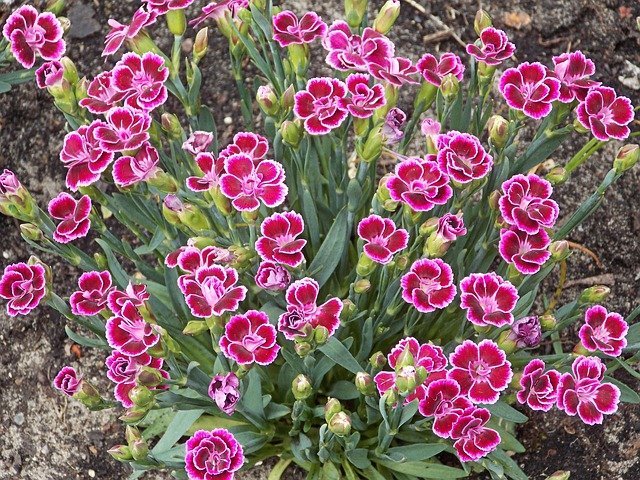 Plant type: sun-loving perennial
Plant type: sun-loving perennial
Growing conditions: sunny location with well-drained soil
Water: It can withstand longer periods of drought. Water from rainfall is mostly sufficient.
Flowering period: from late spring to late summer
Hardiness: USDA 3 – 9 (depends on species)
Dianthus plants are versatile perennials that can fill many niches in your garden. They can be grown in rockeries, as balcony flowers or in flowerbeds. The dianthus genus includes more than 300 species of different sizes, shapes and colors, so there’s something for everyone. The most well known are carnations (dianthus caryophyllus), pinks (dianthus plumarius ) and sweet williams (dianthus barbatus). Dianthus plants are mostly evergreen perennials with greyish-blue stems and leaves and beautiful, fragrant flower clusters or carpets in shades of pink, white and purple.
6. Phlox
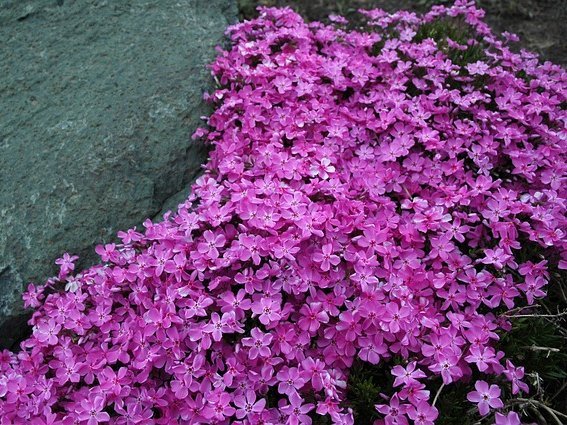 Plant type: perennial or annual
Plant type: perennial or annual
Growing conditions: sunny location
Water: It can withstand longer periods of drought. Water from rainfall is mostly sufficient.
Flowering period: from summer to early autumn
Hardiness: USDA 3 – 9 (varies between species)
The phlox genus includes many species that have versatile uses in gardens. Moss phloxes (Phlox subulata) are grown as perennials, balcony flowers or groundcover plants, while tall garden phloxes (Phlox paniculata) are ideal for garden beds, with their beautiful long stems and vibrant flowers. Phloxes are undemanding perennials that benefit from being cut back after flowering. This perennial is available in a wide range of sizes, shapes and colors, all of which can brighten up their surroundings and fill the air with a sweet fragrance.
7. Yarrow Achillea
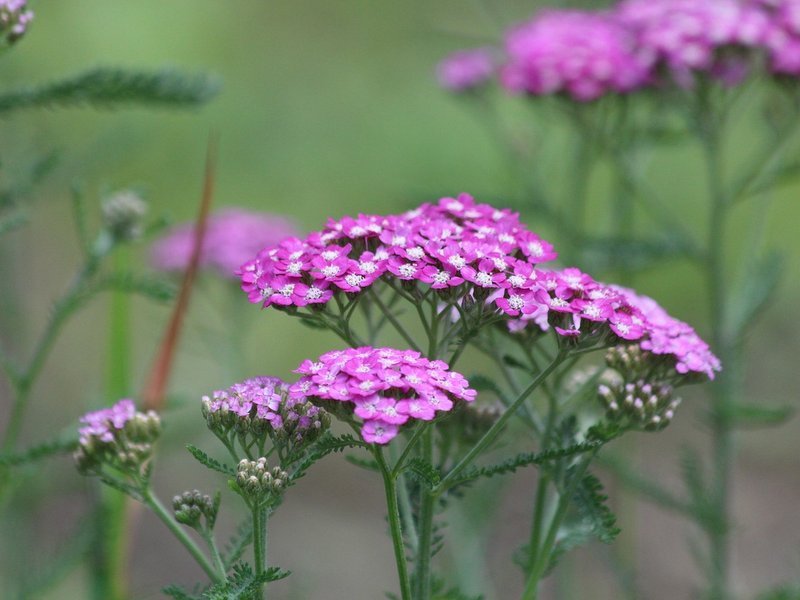 Plant type: sun-loving perennial
Plant type: sun-loving perennial
Growing conditions: sunny location
Water: It can withstand longer periods of drought. Water from rainfall is mostly sufficient.
Flowering period: from early summer until first frost
Hardiness: USDA 4 – 8
If you need to fill an empty space in your garden, you can't go wrong with this hardy and low-maintenance perennial. Yarrow may look familiar with its white inflorescences, as it is commonly found growing in meadows, and it is also known as a medicinal herb. There are multiple varieties of this perennial that can brighten up any garden. Yarrow can grow in almost any conditions and is often considered a weed, but its beauty in the garden will stand out if you choose the right color (in shades of pink, red, yellow, white and orange) and create a dense planting.
8. Purple coneflower Echinacea
 Plant type: sun-loving, long-flowering perennial
Plant type: sun-loving, long-flowering perennial
Growing conditions: sunny location with well-drained soil
Water: It can withstand longer periods of drought. Water from rainfall is mostly sufficient.
Flowering period: from early summer until first frost
Hardiness: USDA 3 – 8
Purple coneflower, or echinacea, is one of the most beautiful long-flowering perennials. This hardy and long-lived perennial can withstand prolonged drought and requires almost no care. In gardens, echinacea forms dense patches producing beautiful flowers on long stems in a variety of colors, depending on the variety. This rewarding perennial will work in several styles of plantings in combination with other plants or on its own.
9. Rockfoil Saxifraga
 Plant type: sun-loving, rockery perennial
Plant type: sun-loving, rockery perennial
Growing conditions: sunny location with rocky, well-drained soil
Water: It can withstand longer periods of drought. Water from rainfall is mostly sufficient.
Flowering period: summer
Hardiness: USDA 3 – 10 (depends on species)
Perennials of the genus saxifraga are mostly low-growing plants that form clumps and carpets on rocky and exposed sites. In landscaping, they are popular rockery and understory plants or planted alongside paths. There are over 400 species of saxifrages in a variety of color combinations and flower shapes, so they can easily be incorporated into any garden. Most rockfoils are small perennials that flower all summer, with leaves growing close to the ground and small flowers that stand out on long stems.
10. Rhododendron
 Plant type: shade-loving perennial
Plant type: shade-loving perennial
Growing conditions: shaded to semi-shaded location and acidic, well-drained soil
Water: regular watering is necessary if there is a prolonged absence of rain
Flowering period: from late spring to summer (for most species)
Hardiness: USDA 4 – 8 (varies between species)
Rhododendrons and azaleas are a great choice for a dominant element of a garden. There are thousands of rhododendron and azalea species of different sizes, shapes and flower colors, but all have in common their magnificent inflorescences that make them so prized. Caring for rhododendrons is not difficult. They simply need a semi-shaded site with well-drained, acidic soil, and watering during prolonged droughts.
11. Wild/creeping thyme Thymus serpyllum/pseudolanuginosus
 Plant type: sun-loving perennial
Plant type: sun-loving perennial
Growing conditions: sunny location with well-drained soil
Water: It can withstand longer periods of drought. Water from rainfall is mostly sufficient.
Flowering period: from early summer to early fall
Hardiness: USDA 2 – 9
This beautiful perennial is quite versatile in gardens thanks to its low-maintenance qualities. It can be used as a rockery plant, as a walk-on plant between stepping stones or as an understory plant in beds, where it typically forms clumps. Once rooted, creeping thyme is virtually maintenance-free and tolerant of frost, heat, full sun as well as harsh treatment. It likes to form rhizomes, so it will quickly fill in larger areas and grace your garden with its lovely foliage. There are many varieties of creeping thyme, but you can also grow it in its natural form (thymus serpyllum), which you can find growing in the wild. Creeping thyme is a well-known medicinal herb, so it can be useful too.
12. Astilbe
 Plant type: shade-loving perennial
Plant type: shade-loving perennial
Growing conditions: shaded to semi-shaded location
Water: regular watering is necessary if there is a prolonged absence of rain
Flowering period: from late spring to early summer
Hardiness: USDA 3 – 8
This shade-loving perennial glows with festive colors during the flowering season. In addition to the vibrant Christmas tree-shaped flowers (shades of white, red, pink and blue) that make great cut flowers, this perennial also offers a variety of leaf colorings. If you choose different varieties of astilbe in multiple colors, flowering periods and heights, these shade-loving perennials will add texture and color to your garden all season long. Astilbe prefers shady sites and moist but not soggy soil. The soil should therefore be well-drained, and nutrient-rich to encourage flowering. Astilbe spreads quickly and forms characteristic clumps, but you can keep it under control by removing parts of the plant or mulching.
13. Beardtongue Penstemon
 Plant type: perennial
Plant type: perennial
Growing conditions: sunny location with well-drained soil
Water: It can withstand longer periods of drought. Water from rainfall is mostly sufficient.
Flowering period: from early summer to fall
Hardiness: USDA 2 – 9
Penstemon, or beardtongue, produces attractive spikes of flowers in shades of white, pink, blue and red. Penstemon leaves can also be variously colored in shades of green, silver and burgundy, so by choosing the right variety you can create different color combinations in your garden. Although penstemon looks like a delicate plant, this perennial is actually very hardy and easy to grow.
14. Aster
 Plant type: perennial
Plant type: perennial
Growing conditions: sunny location with well-drained soil
Water: water from rainfall is mostly sufficient. Watering is necessary if there is a prolonged absence of rain
Flowering period: from late summer until first frost
Hardiness: USDA 3 – 8
Reminiscent of daisies, these autumn garden beauties are unpretentious and rewarding perennials, blooming in shades of pink, blue, purple and red. They are available in a range of sizes so they will work well in the understory, but also as larger plants in flowerbeds or rockeries. Asters are also popular cut flowers to bring home. This perennial is easy to grow: nutritious, well-drained soil and a sunny location will suffice.
15. Daylily Hemerocallis
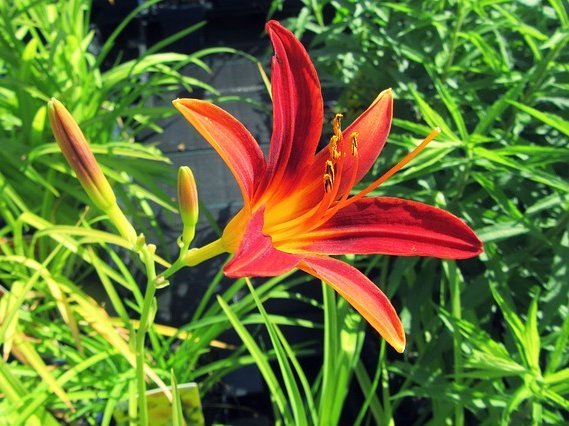 Plant type: sun-loving, low-maintenance perennial
Plant type: sun-loving, low-maintenance perennial
Growing conditions: sunny location
Water: It can withstand longer periods of drought. Water from rainfall is mostly sufficient.
Flowering period: summer
Hardiness: USDA 3 – 10
These colorful garden perennials are easy to care for and will survive almost anything, making them suitable even for novice growers. Daylilies are versatile and adaptable plants that will thrive in all kinds of conditions, bringing bright colors to gardens throughout the summer. The flowers of this perennial only last a day, but a single plant will produce 200 to 400 flowers per season, so flowering will last for a month or more.
16. Peony Paeonia
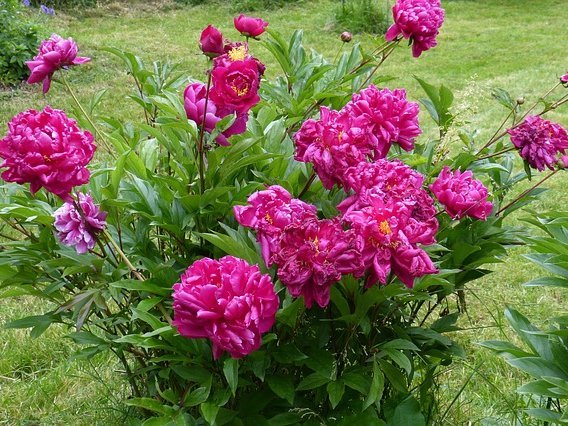 Plant type: long-lived perennial
Plant type: long-lived perennial
Growing conditions: sunny location
Water: water from rainfall is mostly sufficient. Watering is necessary if there is a prolonged lack of rain
Flowering period: from late spring to early summer
Hardiness: USDA 3 – 9 (depending on variety)
Peonies are long-lived perennials delivering a flood of breathtaking fluffy flowers year after year in late spring and early summer. Some peonies can live for more than 100 years in the right conditions. These perennials are great for planting along the edges of paths, low hedges or in combination with other perennials. They form rich shrubs in lush green colors that turn to shades of red and gold in autumn. A sunny site and well-drained soil is all they need to thrive.
17. Tickseed Coreopsis
 Plant type: sun-loving, low-maintenance perennial
Plant type: sun-loving, low-maintenance perennial
Growing conditions: sunny location
Water: It can withstand longer periods of drought. Water from rainfall is mostly sufficient.
Flowering period: from early summer to fall
Hardiness: USDA 2 – 11
There are both annual and perennial versions of coreopsis, commonly known as tickseed. Perennial tickseeds are very hardy plants that can withstand hard frosts and extreme heat and still brighten up the garden with a flood of vibrant, long-blooming flowers. Tickseeds are available in many sizes, shapes and flower color combinations in shades of red, pink, white and yellow, many with a dark brown center, creating a beautiful texture in the garden.
18. Rose Rosa
 Plant type: perennial shrub
Plant type: perennial shrub
Growing conditions: sunny location with well-drained soil
Water: It can withstand longer periods of drought. Water from rainfall is mostly sufficient.
Flowering period: mostly during early summer (varies between species and varieties)
Hardiness: USDA 3 – 11 (varies between species and varieties)
Rose is the queen of gardens and the most popular flower in the world, symbolizing romance, elegance and passion. There are thousands of varieties of this elegant plant in shrub or trailing forms, with an endless palette of colors and shapes. This perennial is easy to grow. A sunny site with well-drained soil is all that roses need to thrive and bring you joy.
19. Hosta (Funkia)
%20-%20ornamental%20perennial.jpg) Plant type: shade-loving, low-maintenance perennial
Plant type: shade-loving, low-maintenance perennial
Growing conditions: shaded to semi-shaded location
Water: intense watering is needed after planting. Regular watering is necessary if there is a prolonged lack of rain
Hardiness: USDA 3 – 9
If you have a shady corner in your garden, you can brighten it up with these lovely shade-loving perennials. Hostas, also known as funkia, come in a myriad of varieties with different leaf colors and patterns and a range of sizes (from 10 cm to 1.2 m/4 inches to 4 feet) that can be planted as a continuous groundcover or as a single plant. Of course, different hosta varieties have different light requirements. The darker their leaves, the more shade they will prefer. Caring for these shade-loving perennials is not difficult. Hostas need just slightly acidic, well-drained soil, and once they have taken root they can withstand prolonged drought. That's why they are often used in low-maintenance gardens, where they can last for decades thanks to their natural longevity.
20. Hydrangea
 Plant type: shruby perennial
Plant type: shruby perennial
Growing conditions: semi-shaded location
Water: It can withstand longer periods of drought. Water from rainfall is mostly sufficient.
Flowering period: from summer to fall
Hardiness: USDA 5 – 9
With their huge, colorful inflorescences, hydrangeas bring an old-fashioned charm to the garden that is hard to resist. This perennial is easy to grow and adapts to almost any soil type. The pH of the soil also affects the color of the hydrangea flowers, with acid soils (PH<5.5) turning the flowers blue, while hydrangeas in alkaline soils will produce pink flowers. Hydrangeas are an excellent option for several planting styles, including solitary planting, group planting in beds and of course in pots. These colorful shrubby perennials get bigger and denser year after year, so give them plenty of room to thrive when planning your garden.
There are many other perennials that we have not mentioned in our selection but are noteworthy as well:
For example, russian sage (perovskia atriplicifolia), delphinium, lungwort (pulmonaria), speedwell (veronica), bugleweed (ajuga), hardy geranium (geranium), foamflower (tiarella), bleeding heart (lamprocapnos), dead nettle (lamium), lady’s mantle (alchemilla), black cohosh (Actaea racemosa), bellflower (campanula), iris, lady fern (Athyrium) and many other perennials.
Related themes:
1. Discover also Best sun-loving perennials
2. Find Garden ideas fo your inspiration


 Author
Author


